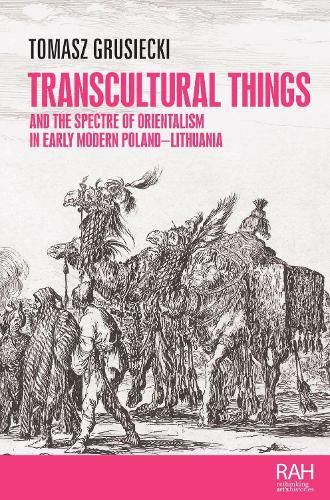Readings Newsletter
Become a Readings Member to make your shopping experience even easier.
Sign in or sign up for free!
You’re not far away from qualifying for FREE standard shipping within Australia
You’ve qualified for FREE standard shipping within Australia
The cart is loading…






Transcultural things examines four sets of artefacts from the Polish-Lithuanian Commonwealth: maps pointing to PolandLithuania's roots in the supposedly 'Oriental' land of Sarmatia, portrayals of fashions that purport to trace Polish culture back to a distant and revered past, Ottomanesque costumes worn by Polish ambassadors and carpets labelled as Polish despite their foreign provenance.
These examples of invented tradition borrowed from abroad played a significant role in narrating and visualising the cultural landscape of Polish-Lithuanian elites. But while modern scholarship defines these objects as exemplars of national heritage, early modern beholders treated them with more flexibility, seeing no contradiction in framing material things as local cultural forms while simultaneously acknowledging their foreign derivation.
The book reveals how artefacts began to signify as vernacular idioms in the first place, often through obscuring their non-local origin and tainting subsequent discussions of the imagined purity of national culture as a result.
$9.00 standard shipping within Australia
FREE standard shipping within Australia for orders over $100.00
Express & International shipping calculated at checkout
Transcultural things examines four sets of artefacts from the Polish-Lithuanian Commonwealth: maps pointing to PolandLithuania's roots in the supposedly 'Oriental' land of Sarmatia, portrayals of fashions that purport to trace Polish culture back to a distant and revered past, Ottomanesque costumes worn by Polish ambassadors and carpets labelled as Polish despite their foreign provenance.
These examples of invented tradition borrowed from abroad played a significant role in narrating and visualising the cultural landscape of Polish-Lithuanian elites. But while modern scholarship defines these objects as exemplars of national heritage, early modern beholders treated them with more flexibility, seeing no contradiction in framing material things as local cultural forms while simultaneously acknowledging their foreign derivation.
The book reveals how artefacts began to signify as vernacular idioms in the first place, often through obscuring their non-local origin and tainting subsequent discussions of the imagined purity of national culture as a result.